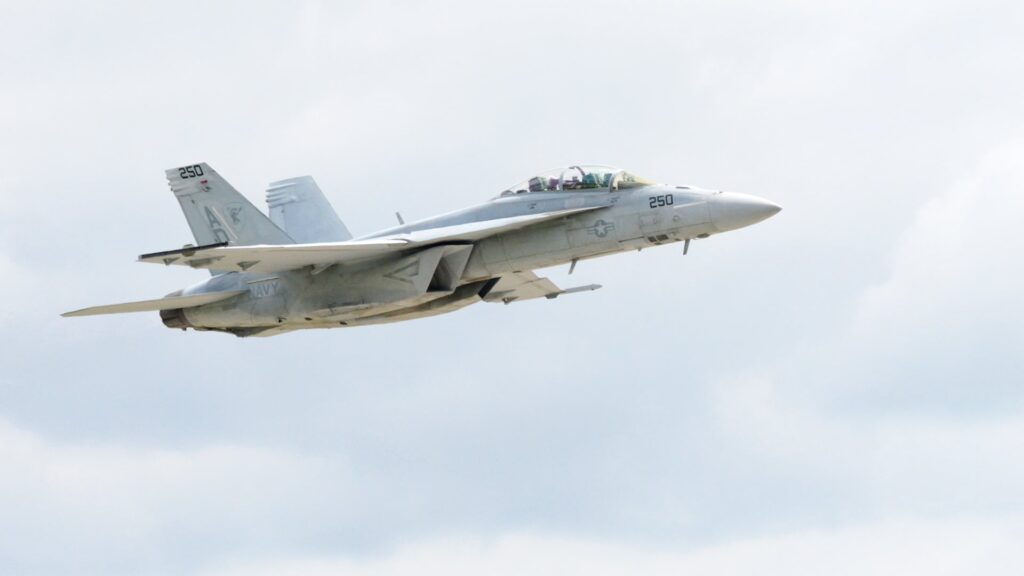
One of the first two Boeing F/A-18E/F Super Hornets with the first increment of Service Life Modification (SLM) improvements delivered back to the U.S. Navy. The SLM improves computing power, displays and lifetime flight hours. (Photo: Boeing)
Boeing on Sept. 24 announced it is relocating its F/A-18E/F Super Hornet Service Life Modification (SLM) work out of its St. Louis region facilities and it plans to wrap up remaining SLM work there by 2027.
The company said decisions on where to transfer the St. Louis-area work is not final yet, but they are starting case studies for moving it to their San Antonio, Texas and Jacksonville, Fla., sites. Boeing already currently performs some of the SLM work in San Antonio and in partnership with the Navy at Fleet Readiness Center (FRC) Southwest in San Diego. Other F/A-18 modification work also currently occurs at the Jacksonville facility.
In 2022 the Navy opened the third SLM line at FRC Southwest with Boeing as a way to increase the pace of SLM work in part to help the Navy manage and reduce its strike fighter shortfall.
The company said the shift in work is part of its expansion and transition plans to support future programs, so the St. Louis region facilities will be shifting more primarily to production of new aircraft over this kind of SLM work.
“Our expansion plans across the St. Louis site triggered the execution of a multi-year strategic plan, requiring the relocation of some work. Given we are already successfully conducting SLM at other locations, this move is logical so we can continue to meet our customers commitments while ensuring we are well poised for future work,” Dan Gillian, vice president and general manager of air dominance and senior St. Louis site executive, said in a statement.
“We have worked with the Navy for years to improve SLM while growing in San Antonio and FRC Southwest. Delivering multiple fighters and capabilities from multiple locations is what we do, and we will continue that work on the Super Hornets for the life of the fleet,” Mark Sears, Boeing Fighters vice president, added.
Boeing’s St Louis region already produces the F-15EX, T-7A Red Hawk Advanced Pilot Training System aircraft, MQ-25 Stingray carrier-based unmanned tanker aircraft, Joint Direct Attack Munition (JDAM) and other munitions production lines. In March Boeing won the down-select to ultimately produce the Air Force F-47 sixth-generation fighter.
The company noted the current St. Louis SLM team members will support these programs as SLM work shifts to other sites.
The SLM process adds Block III capabilities and 4,000 flight hours to the current Block II Super Hornet fighters in service with the Navy. The work is expected to continue though the mid-2030s. The flight hour lifetime increase occurs in two increments, first increasing maximum flight hours from 6,000 to 7,500 and later boosting it further to 10,000 flight hours.
Last year, Boeing noted it finished the upgrade and life extension of the first two Block II Super Hornets one and a half months ahead of schedule, with the St. Louis production line working one month ahead and the San Antonio line working two months ahead of schedule.
This decision comes amid a continuing strike at Boeing’s St. Louis area defense operations by the over 3,200-member machinists union. On Sept. 12 the strike continued after the union members voted against the company’s latest contract offer.
The union is striking over the recommendation of their leadership, which previously reached a tentative deal to increase wages and benefits.
A version of this story originally appeared in affiliate publication Defense Daily.